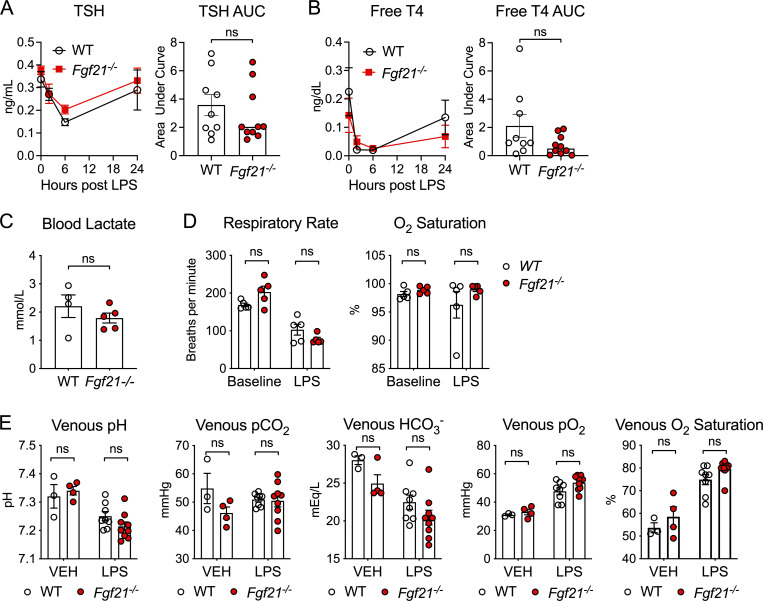Figure S1.
FGF21-deficient mice do not have defects in thyroid hormone axis or differences in lactate levels or blood gases after LPS challenge. (A and B) C57BL/6J (WT) and Fgf21−/− mice were challenged with LPS 10 mg/kg i.p., n = 9–10/group; pooled data are from two independent experiments. (A) Thyroid-stimulating hormone (TSH) measured by ELISA. (B) Free thyroxine (T4) measured by ELISA. (C) Venous blood lactate measured by the i-STAT1 Handheld Analyzer CG4+ cartridge 24 h after 12.5 mg/kg i.p. LPS in WT and Fgf21−/− mice; n = 4–5/group. Data are from one of two independent experiments. (D) Respiratory rate and O2 saturation measured before and after LPS challenge in WT and Fgf21−/− mice; n = 5/group. Data are from one of two independent experiments with similar results. (E) Venous blood gas measured by the i-STAT 1 Handheld Analyzer CG8+ cartridge 24 h after PBS vehicle (VEH) or 12.5 mg/kg i.p. LPS in WT and Fgf21−/− mice; n = 3–9/group. Pooled data are from two independent experiments. Unpaired two-sided t test (A–C) or two-way ANOVA with Sidak’s multiple comparisons test (D and E). Data are expressed as mean ± SEM.

